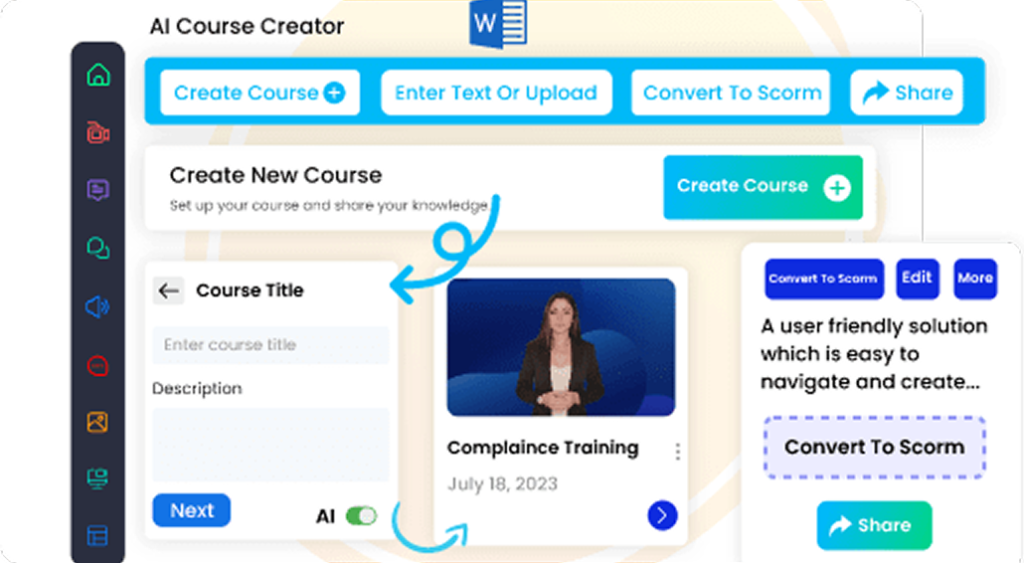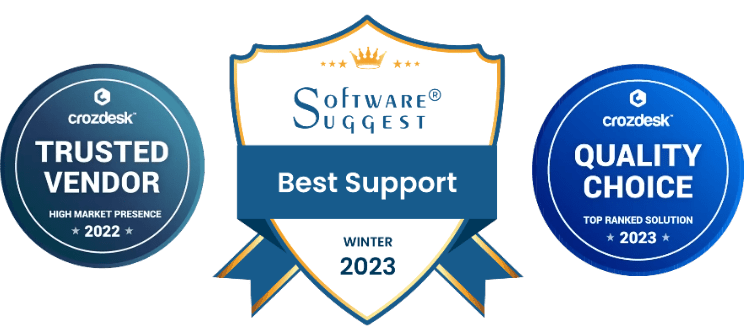Understanding Cross-Selling: Definition and Key Concepts
Cross-selling is a fundamental sales strategy that involves offering customers related or complementary products and services to their original purchase. The primary aim is to increase the total value of each transaction. Unlike upselling, which persuades a customer to opt for a higher-priced or upgraded version of a product, cross-selling focuses on suggesting additional items that enhance the customer’s experience and fulfill broader needs.
For example, when buying a laptop, a customer might be offered a protective case, an external mouse, or an extended warranty—all types of cross-selling. This approach not only helps businesses boost revenue per customer but also deepens engagement and satisfaction by providing relevant options that add tangible value.
The key distinction between cross-selling and upselling lies in their approach: upselling aims to encourage purchasing a more expensive or premium version, while cross-selling recommends related products alongside the original item. Both techniques are critical components of effective sales and marketing strategies, especially in competitive marketplaces.
Implementing successful cross-selling techniques can lead to higher average order values, improved customer loyalty, and a richer overall customer experience. By thoughtfully suggesting products that genuinely complement the initial purchase, businesses foster loyalty and develop a reputation for attentive, customer-focused service.
The Benefits of Cross-Selling for Businesses and Customers
Cross-selling is a powerful approach that can unlock numerous advantages for businesses aiming to increase revenue and for customers seeking tailored solutions. When executed effectively, it creates a win-win scenario that fosters growth and loyalty.
1. Increased Revenue and Profit Margins
Well-implemented cross-selling techniques directly contribute to higher sales figures. Research indicates that customers are more inclined to purchase additional items when recommendations are relevant. For example, studies from the Harvard Business Review show that cross-selling can contribute up to 10-30% of a company’s incremental revenue. Since these cross-sold products often have higher profit margins, this strategy substantially enhances profitability.
2. Enhanced Customer Experience and Satisfaction
When done with thoughtfulness, cross-selling enriches the customer journey. It showcases an understanding of customer needs and offers solutions that increase perceived value. For instance, suggesting a waterproof phone case during a smartphone purchase not only meets an immediate need but also demonstrates personalized attention, resulting in higher satisfaction and loyalty.
3. Strengthened Brand Loyalty and Customer Retention
Providing relevant cross-sell options consistently builds trust and signals a commitment to addressing customer needs comprehensively. As customers recognize this attentiveness, their loyalty deepens. According to Bain & Company, increasing customer retention rates by just 5% can boost profits by 25% to 95%. Therefore, cross-selling serves as a strategic tool to nurture long-term relationships.
In summary, effective cross-selling strategies drive revenue growth, elevate customer satisfaction, and foster long-term brand loyalty. When executed with insight and a customer-centric approach, cross-selling transforms from a mere sales tactic into a key driver of sustainable business success.
Proven Cross-Selling Techniques You Can Implement Today
To maximize cross-selling effectiveness, organizations should adopt targeted methods that resonate with customers. The most impactful techniques include bundling related products, offering personalized deals, and leveraging customer data for tailored recommendations.
The Power of Product Bundling
Bundling involves packaging related items at a discounted rate or with added value, simplifying purchase decisions and encouraging higher transaction sizes.
- Increased Average Order Value (AOV): Well-curated bundles prompt customers to buy more at once.
- Perceived Value: Offers that combine products provide savings and convenience.
- Inventory Management: Bundling helps clear slow-moving stock by pairing it with popular items.
Best practices include combining naturally related products, communicating clear discounts, and highlighting benefits to persuade customers effectively.
Offering Personalized Deals
Personalization tailors recommendations based on customer history and preferences, making cross-sell offers more relevant and enticing.
- Relevant Recommendations: Machine learning analyzes behaviors to suggest suitable complementary items.
- Loyalty Rewards: Targeted discounts reinforce the feeling of being valued.
- Seamless Experience: Personalized suggestions foster a smoother, more engaging shopping process.
Effective personalization requires thorough data collection, segmentation, and ongoing optimization to refine recommendations.
Leveraging Customer Data for Cross-Selling
Data-driven strategies are essential for uncovering opportunities. Analyzing transactional, behavioral, and feedback data allows businesses to identify customer needs and predict future preferences.
- Transactional Data: Past purchases reveal preferences and buying patterns.
- Behavioral Data: Website engagement and browsing habits indicate interests.
- Customer Feedback: Reviews and surveys provide insights into satisfaction and unmet needs.
Implementing predictive analytics, targeted segmentation, and automation enhances cross-sell relevance and success.
Learning Built Around Your Goals.
Discover how our courses can align with your training goals and drive real results.
Real-Life Cross-Selling Examples Across Industries
Cross-selling has proven effective across various sectors, from retail and banking to e-commerce. Businesses leveraging tailored strategies can achieve remarkable growth and customer satisfaction.
Retail Industry: Enhancing Customer Experience and Revenue
A prominent apparel retailer used AI-powered recommendation engines to personalize online shopping. Customers browsing jeans, for example, received suggested accessories like belts, shirts, or shoes matching their style preferences.
Results include: a 20% increase in average cart value, a 15% boost in conversion rates, and a 12% rise in repeat purchases through targeted post-sale emails. This illustrates how relevance-driven cross-selling improves both revenue and loyalty.
Banking Sector: Cross-Selling Financial Products
A leading bank adopted customer segmentation and personalized outreach. For existing basic account holders, advisors recommended related financial solutions such as credit cards, loans, or investment services based on income and behavior.
Results include: a 25% increase in cross-sell ratios and higher deposit balances. The approach underscores the power of personalized engagement in banking.
E-Commerce Sector: Technology-Driven Optimization
An online marketplace utilized machine learning to analyze customer behavior in real-time. Adding a smartphone to the cart triggered recommendations for accessories and insurance options.
Results include: a 30% rise in accessory sales and an 18% uplift via remarketing. Such tech-driven approaches maximized revenue and customer lifetime value.
These case studies highlight the importance of relevance, data insights, and timely offers in effective cross-selling.
Challenges in Cross-Selling and How to Overcome Them
Despite its potential, cross-selling can face hurdles that impede success and risk alienating customers. Recognizing and addressing these challenges is vital for maintaining positive relationships and maximizing results.
Common Obstacles:
- Lack of Trust and Loyalty: Customers hesitant to accept additional offers due to low confidence in the seller.
- Insufficient Data: Poor insights lead to irrelevant or poorly timed recommendations.
- Overly Aggressive Tactics: Pushy sales efforts frustrate customers and damage reputation.
- Poor Training: Sales teams lacking product knowledge or soft skills struggle to suggest appropriate items.
- Poor Timing: Wrong moments—such as during complaints—undermine cross-sell efforts.
Strategies to Overcome Challenges
- Deep Customer Insights: Utilize CRM and analytics for understanding preferences.
- Focus on Need-Driven Recommendations: Align suggestions with customer benefits.
- Build Trust: Engage consistently and transparently to establish credibility.
- Enhance Training: Equip sales teams with product knowledge and soft skills.
- Appropriate Timing: Offer cross-sells after positive interactions or at suitable moments.
- Soft Language: Use non-pushy language to present cross-sells as helpful options.
Ultimately, overcoming these hurdles requires tact, understanding, and customer-focus. This approach ensures cross-selling efforts are effective and relationship-enhancing.
How CogniSpark AI Enhances Cross-Selling Strategies
Cross-selling is more than just a sales tactic—it’s a strategic approach to maximizing customer value and deepening relationships. However, successful cross-selling depends heavily on employee training, product knowledge, and timing. That’s where CogniSpark AI steps in to revolutionize the process.
With its intelligent AI Tutor, CogniSpark AI enables customer-facing teams to practice real-world cross-selling scenarios in a simulated, risk-free environment. Sales reps receive instant feedback on their pitch, tone, and timing, helping them identify customer needs and match them with relevant products or services more effectively. This interactive coaching empowers employees to approach each conversation with confidence and agility.
What sets CogniSpark AI apart is its built-in authoring tool, which allows businesses to create custom cross-selling modules that align with their brand voice and specific product lines. Whether it’s upselling in retail or bundling in B2B services, organizations can design content that resonates with their market and objectives.
Fully compatible with any LMS, CogniSpark AI ensures seamless integration and centralized tracking, enabling managers to monitor progress, optimize strategies, and continuously upskill teams. The result? More personalized customer interactions, increased average order value, and a stronger bottom line.
By combining personalized learning, scenario-based practice, and easy content customization, CogniSpark AI turns cross-selling from a one-size-fits-all script into a dynamic, data-driven skillset.
Conclusion: Mastering Cross-Selling for Business Growth
Maximizing cross-selling opportunities is integral to sustainable business growth. By utilizing data insights, personalized strategies, and innovative AI tools like CogniSpark, organizations can identify promising prospects and deliver tailored solutions effectively. Building customer trust and focusing on genuine needs foster long-term loyalty and higher revenue.
Incorporating AI-powered analytics and automation streamlines the cross-sell process, providing actionable insights and real-time recommendations. This technological edge allows businesses to proactively meet customer needs, optimize sales cycles, and create more meaningful customer relationships. Ultimately, mastering cross-selling through strategic and technological means unlocks new avenues for expansion and competitive advantage.
Access 100+ fully editable, SCORM-compatible courses featuring an integrated AI Tutor and an in-built authoring tool. Seamlessly compatible with any LMS, these courses are designed to elevate your training programs.
Explore Our eLearning Course Catalog























